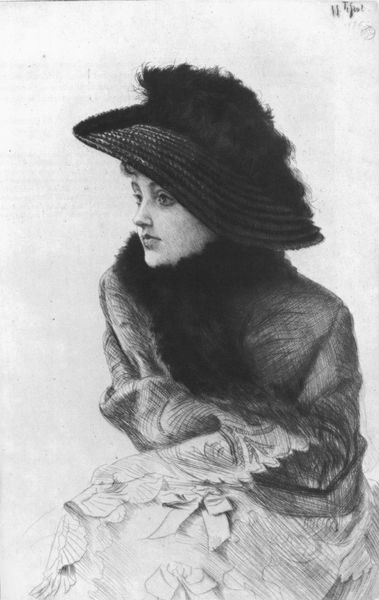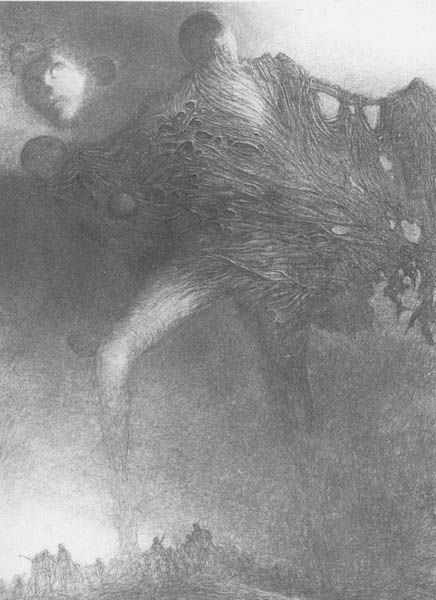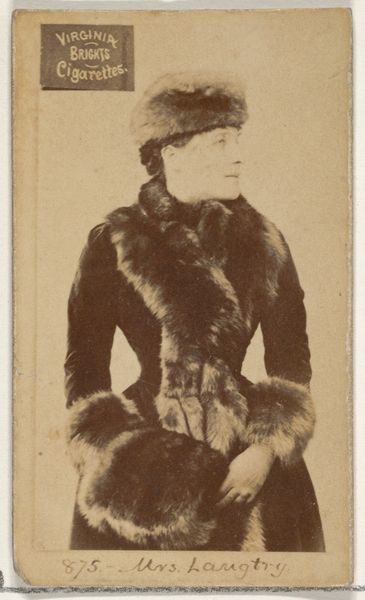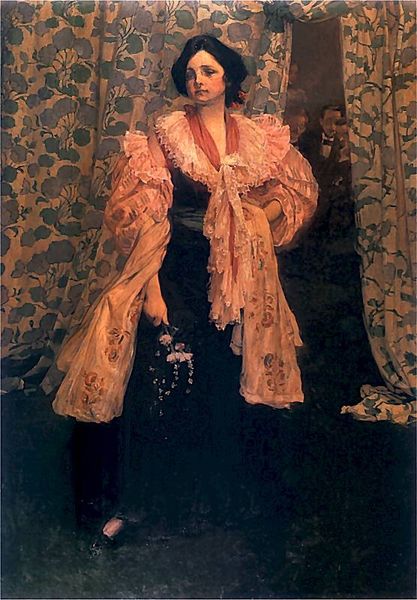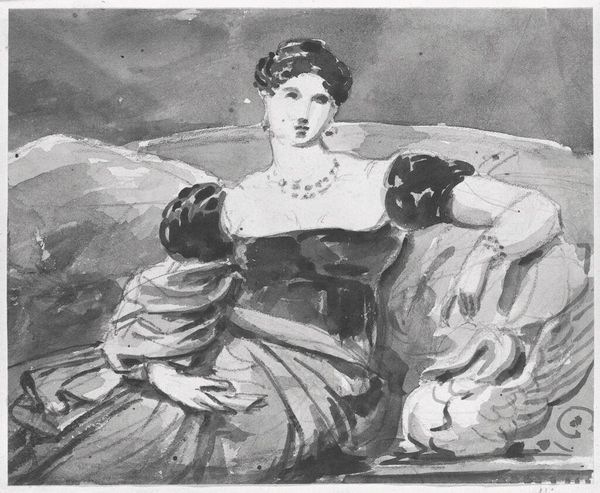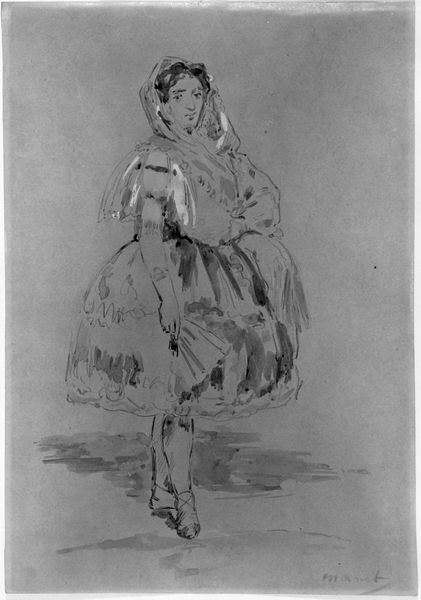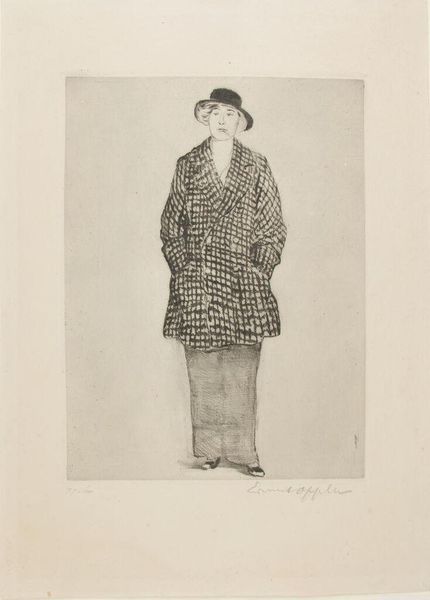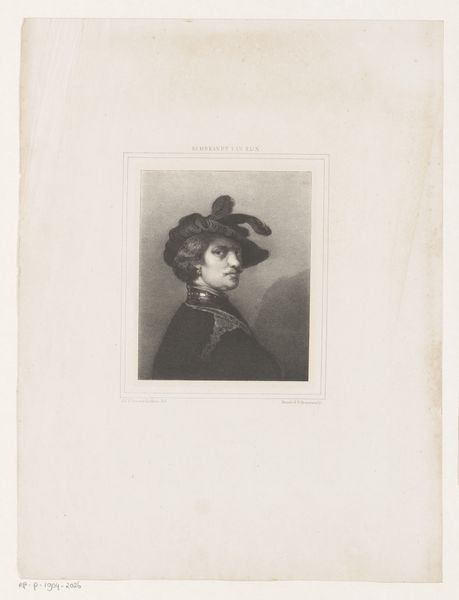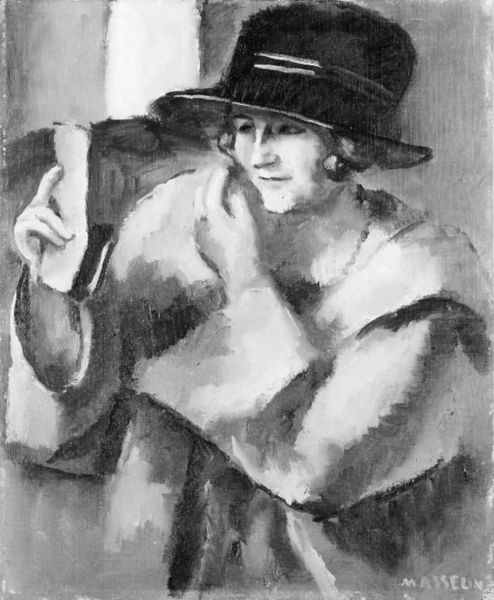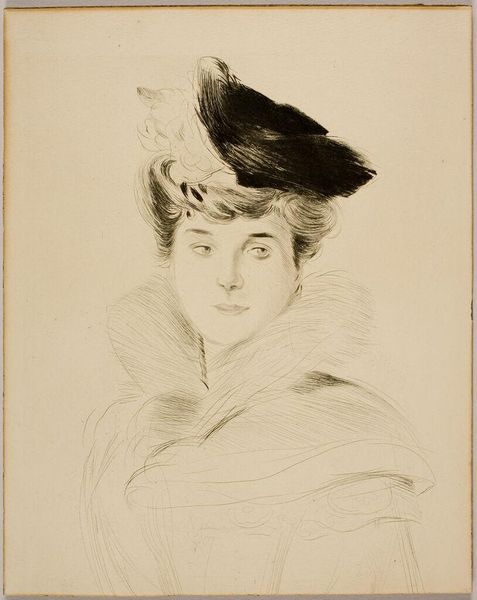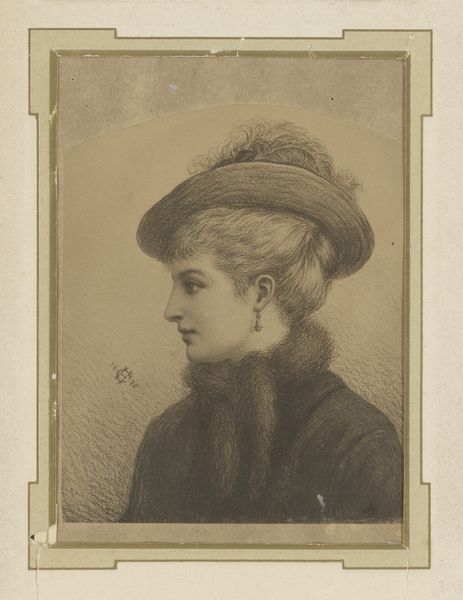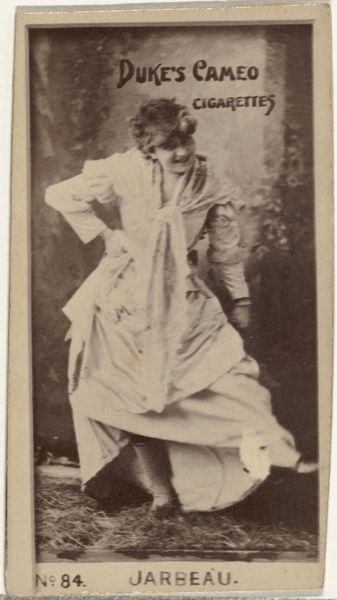
Dimensions: 8 1/8 x 5 15/16 in. (20.64 x 15.08 cm) (image)
Copyright: No Copyright - United States
Curator: Ah, "Portrait--Mlle. D.", a compelling piece, thought to be from around the turn of the 20th century. It's currently held here at the Minneapolis Institute of Art, by the artist Robert Demachy. Editor: You know, looking at it, it’s the eyes that get me. There’s something incredibly direct and modern about her gaze, even though the whole composition seems dipped in the past. Sort of like a soul singer on an old 78 record. Curator: That blend of modernity and tradition is classic Demachy! He was a real proponent of pictorialism. Photography, at that time, striving to be considered "art," would try and mimic painting with soft focus, or manipulate the prints using chemicals and alternative printing methods. Editor: Ah, right. Like smudging away reality till it’s all dreamy emotion. You can almost feel the grit of the charcoal. Does she know something we don’t? Seriously, it's the secrets she may hold in her face that has grabbed me the most here. Curator: And it’s no accident! Demachy was very active in the Parisian art scene, deeply interested in ideas of expression. Photography freed him to explore the transient expressions, he can manipulate and craft those captured expressions, making them… painterly. It is almost cinematic. Editor: Definitely evokes that feeling of fleeting moments, a real emotional weight, especially in the blacks. The rendering of her luxurious clothing and setting hints at social standing but doesn't overshadow her presence. The whole aesthetic walks a tightrope between genuine engagement and contrived artistry. Curator: Precisely. His aesthetic choices were politically charged for the time. The goal was, as it still is, to challenge the perception of what "art" could be. Now photography doesn’t need this validation, which only makes this work even more alluring today. Editor: You know, stepping back, what sticks with me is the sense of intimacy, despite all the artifice involved. You can tell there was connection, some kind of spark. It transcends technique. It reminds us what makes an image arresting in the first place is its emotive impact, its sense of being caught by surprise with a glimpse of the world's beauty.
Comments
No comments
Be the first to comment and join the conversation on the ultimate creative platform.
